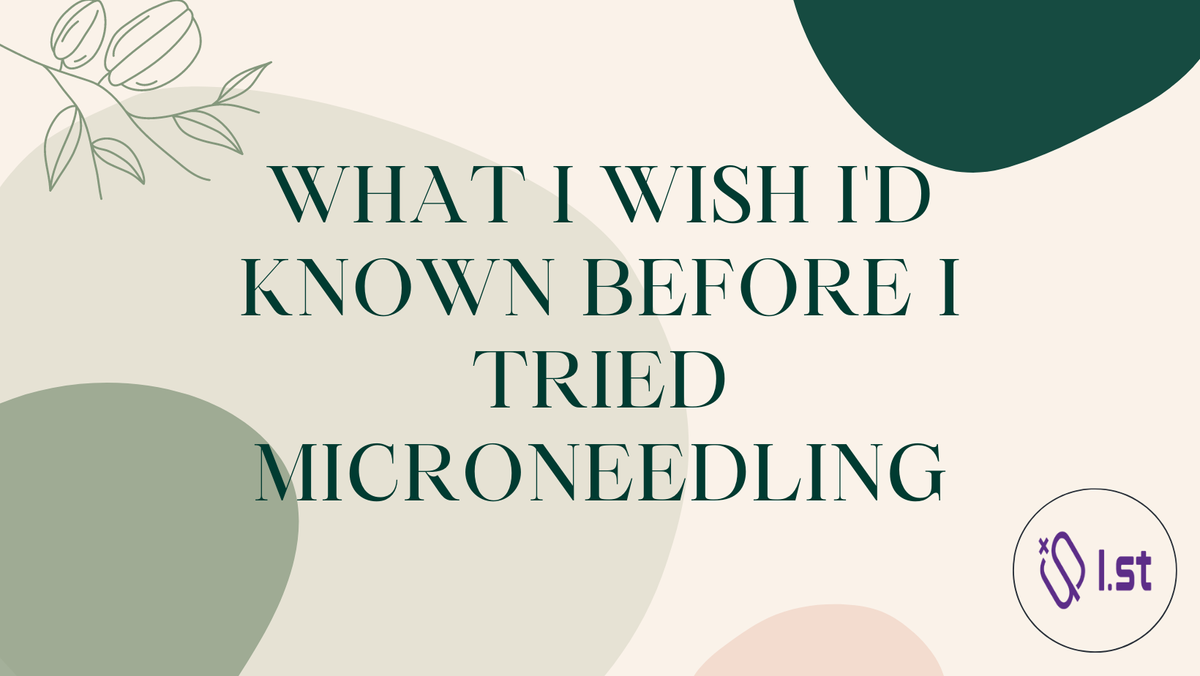
Before we go any further, let me just put this out there: You can group me in the "down for anything" category when we're talking beauty. I'll pretty much try whatever—especially if the alleged benefits aid one of my many skin concerns. At the top of my list is acne scars. These little marks decided to make their presence known in my life when I was 23. I've been dealing with them ever since and am game to try every fading, brightening, and lightening treatment under the sun. So after hearing countless praise for microneedling, I had to get the low-down for myself.
According to a 2009 study, almost 100 percent of microneedling participants reported a noticeable difference and vast improvement in the appearance of their acne scars after a treatment.1 This solid fact was all I needed to say, "Yes." I spoke to Gabe Lubin, founder of Cartessa Aesthetics, and Sejal Shah, MD, FAAD, a dermatologist at SmarterSkin Dermatology in New York, for more about the process—and underwent a microneedling procedure myself.
Read on for more about how microneedling works, what it does, and what my experience was like.
What Is Microneedling?
Microneedling is a procedure that uses a bunch of tiny needles to puncture the very first layer of skin. This process works to rejuvenate your skin by boosting collagen production, which in turn reduces the appearance of wrinkles and fine lines and elevates the overall texture of your skin.
The particular microneedling treatment I underwent was done with a tool called the Vivace (in my particular experience, we used the microneedling device in tandem with a laser, which is more intense than microneedling alone). "What excited me about the Vivace was, of course, the combination of radiofrequency and microneedling, but more so how precisely, cleanly, and deeply it could deliver both. Finally, you add in blue and red LED, and you have a trifecta of modalities to treat multiple skin concerns," explains Lubin.
Benefits of Microneedling
- Enhances texture of skin
- Stimulates collagen production
- Can help reduce scars and hyperpigmentation
- Can reduce the appearance of wrinkles2
How to Prepare for Microneedling
If you're using any intense topical treatments (such as those containing retinol), you'd be wise to discontinue use a few days before your microneedling treatment. Harsh products could aggravate the skin, so milder is the key. "In addition to having a cleansed and toned face, you should also avoid using retinol at least 48 hours prior and avoid direct sun exposure for about three days prior and three days following," notes Josie Holmes, esthetician at SKINNEY Medspa. "I would also advise against using any aggressive acids within the week of the procedure."
You should arrive to your appointment with clean, dry skin (if not, the technician will wash your face so it's clean before the procedure). Next, you'll likely be slathered in numbing cream, so the pain won't be quite so intense.
What to Expect from Microneedling
Does it hurt? After letting the numbing cream seep into my skin for a half-hour, having a bunch of needles continuously puncture my skin was honestly an easy process. So to definitively answer that, it doesn't hurt, but it doesn't feel good. In terms of pain, I experienced a tolerable treatment that lasted all of 20 minutes. To be real, it felt like five minutes, and by the end of it, I was fine. My forehead, hairline, and jawline areas were more sensitive than other areas. I barely felt the tool when it passed over my cheeks, which Shah surprisingly confirmed was the deepest level of depth.
After the microneedling, the procedure was followed up with a soothing serum and hydrating face mask that honestly felt like heaven. Ironically, even after the numbing cream wore off a couple of hours later, it didn't feel like I had just been poked hundreds of times. Contrary to how scary this sounds, I experienced no pain whatsoever.
"The great thing about this treatment is there's really no significant downtime," says Shah. "Afterward, there's a little bit of redness and might be some areas of pinpoint bleeding, but really, it's a no-downtime kind of treatment, so most people leave here a little bit red. A couple of hours later, you're pretty much back to normal, and the next day, you can resume your normal skincare and normal activities."
Side Effects
Immediately after my face mask, I snapped this selfie. As you can see, my cheeks and the top of my forehead were slightly red. This is a normal side effect of the minimal bleeding that happens during the treatment.5 I was shook because the only time I experience redness is after a crazy workout. But this literally went away in an hour. The treatment is essentially wounding your skin so it can feel new again—this is the result of that.
Another disclaimer to note: I have extremely sensitive skin, so this may not happen to you. But by day two, my skin felt really raw and itchy. It wasn't unbearable but definitely uncomfortable. To combat this, I slathered on Cortizone Anti-Itch Cream ($6) in the morning and before I went to bed. I also noticed tiny imprint marks (on my forehead especially) from the needles.
By day four, my itchiness has almost completely gone away. The tiny post-procedural marks also faded more and more each day. These are a normal side effect and should clear up in a few days.
Aftercare
Real talk, this lit-from-within glow is probably my favorite benefit from the procedure thus far. This was the morning after microneedling, and I was so impressed by the radiance of my skin. That cheekbone glow is not from highlighter, people.
I also was surprised by how soft my skin felt and how the size of my pores shrank significantly. I load up on hydrating oils every morning because of my inherently dry skin, and I'm addicted to how soft it leaves my skin feeling. But I literally woke up with cushion-like skin without all of the extra work. I decided to go makeup-free until my skin completely healed.
The Final Takeaway
Studies show that your topical products are more deeply penetrating after microneedling.4 This is so, so true. I've been loving this hydrating moisturizer this month. But this week, after my treatment, it's literally felt so incredibly soothing on my skin—to the point that I look forward to cleansing my skin and applying this the second I walk into my apartment at the end of the day.
My pores feel so open and exposed—so I feel like my skin has been efficiently absorbing product (which is why I've decided to take it easy on the face makeup). I'm letting my skin soak up every second of this effect from my topical products.
SOURCE: BYRDIE Microneedling Side Effects by Maya Allen
According to a 2009 study, almost 100 percent of microneedling participants reported a noticeable difference and vast improvement in the appearance of their acne scars after a treatment.1 This solid fact was all I needed to say, "Yes." I spoke to Gabe Lubin, founder of Cartessa Aesthetics, and Sejal Shah, MD, FAAD, a dermatologist at SmarterSkin Dermatology in New York, for more about the process—and underwent a microneedling procedure myself.
Read on for more about how microneedling works, what it does, and what my experience was like.
What Is Microneedling?
Microneedling is a procedure that uses a bunch of tiny needles to puncture the very first layer of skin. This process works to rejuvenate your skin by boosting collagen production, which in turn reduces the appearance of wrinkles and fine lines and elevates the overall texture of your skin.2
The particular microneedling treatment I underwent was done with a tool called the Vivace (in my particular experience, we used the microneedling device in tandem with a laser, which is more intense than microneedling alone). "What excited me about the Vivace was, of course, the combination of radiofrequency and microneedling, but more so how precisely, cleanly, and deeply it could deliver both. Finally, you add in blue and red LED, and you have a trifecta of modalities to treat multiple skin concerns," explains Lubin.
"Physicians can select the exact depth best for each patient's skin type and condition and use robotic precision delivery to go as deep as 3.5 millimeters at 0.1-millimeter increments—no other device can." Blue light is helpful for those who suffer from acne, as the light and heat target bacteria that cause breakouts
